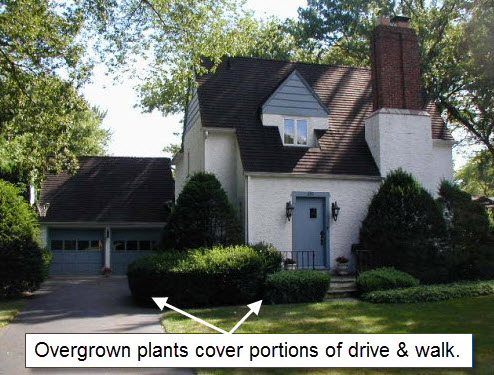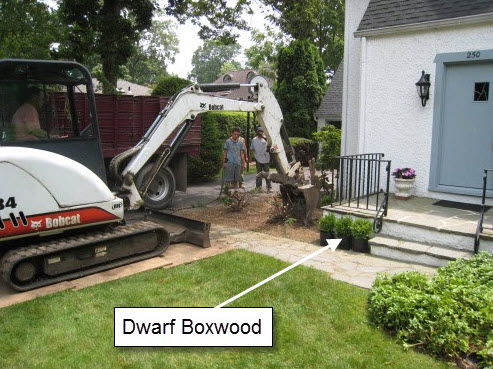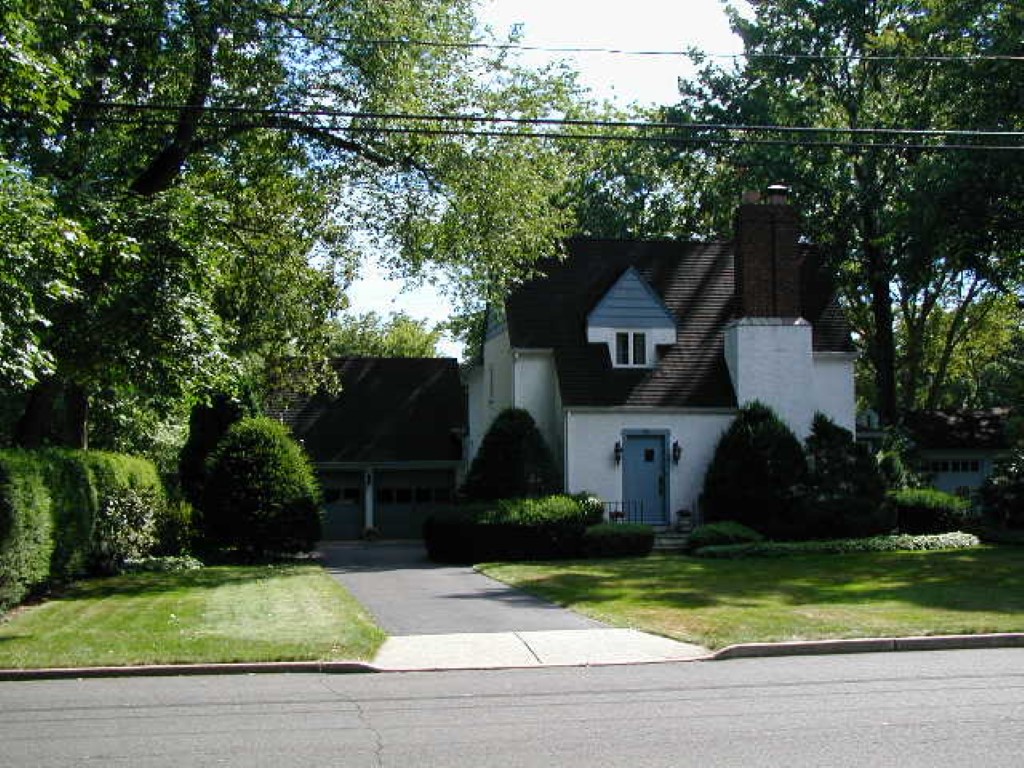
Have you ever removed overgrown plantings and gained back valuable space on a driveway or patio?
Or maybe you cleared a walkway so that two people can now walk side by side instead of single file.
These overgrown hardscapes are quite common with 25 year old plantings. But when this happens on newer landscapes something is seriously lacking.
When you deal with inanimate objects in design, like stone, wood and metal, they pretty much stay the way they are.
But plants are living things. Everyone of them is destined to grow a certain way and to a certain size.
Knowing a plant’s characteristics is so important when planting near hardscapes.
But overgrowth should not be your only concern. We’ve all seen walkways pushed out of the ground by surface roots.
And adequate space for root development on large plants is often forgotten when planting on top of retaining walls.
The roots of a large growing tree can push out a wall over time. Also, as the tree gets larger it can topple over because its restricted root system can not support it.
Controlling “Vegetative Creep” On Hardscapes
Let’s focus on the overgrowth issue. There are two aspects to controlling overgrowth on hardscapes.
- Plant selection and spacing
- Pruning
In the picture at the top, this older landscape was ready for a renovation.
The spreading yews (Taxus) were growing well into the driveway and walkway. The azaleas also crowded the walk and steps.

As you can see all existing plantings were cut down and ripped out.
Dwarf Boxwood (Buxus suffruticosa) are going in the narrow space on either side of the steps. They can be maintained fairly easily in that small area.
A tall growing, but columnar (narrow) evergreen will be the new dominant plant on the left corner.
Low groundcovers and perennials will fill the space around it. These lower, non-woody plants will not compete with the columnar evergreen allowing it to grow into its beautiful natural form.
How wide a plant will grow determines your spacing and distance from the hardscaping. It’s not unusual to see relatively new plantings with poorly spaced plants.
Taking the time to look up the size potential of plants:
- Gives your landscape a future
- Reduces maintenance and pruning
The Right Pruning Helps Plantings and Hardscapes Coexist
Pruning is normally a part of any comprehensive maintenance program.
If you combine annual pruning with smart plant selection and spacing your landscapes have a future.
Sometimes a situation arises where you find yourself compromising due to a unique circumstance. Perhaps you had to position a plant closer to a walkway than you would have preferred.
In this instance regular pruning is the only thing that will make this work, at least for a reasonable amount of time anyway.
If possible you want to limit how often this happens because it puts more dependency on the maintenance end.
All too often you see walls, walkways, patios…you name it, eaten alive by nearby plantings.
The majority of these mishaps could have been either totally prevented or controlled to a reasonable point by pruning.

Ideally you want to be proactive with your pruning and not wait until the hardscape is covered.
If each season you selectively prune back encroaching growth, the plant almost becomes trained to this regimen and you avoid having to make major cuts.
In the picture above this juniper was installed 2 years ago. The homeowner is a do-it-yourselfer so I selectively pruned back these few Wiltoni Juniper as an example for him to follow.
Wiltoni Juniper wants to keep spreading and if it’s not controlled will continue to grow right over the driveway.
So think about the plants you intend to install or maintain near hardscapes.
- How do they naturally grow? Upright? Spreading? Mounded?
- What is their potential size? Height and width.
- Who will be pruning them? Do they know how to prune this particular plant correctly and when?
These simple steps of knowing a plant’s size potential, spacing them appropriately from hardscapes, and pruning them correctly will distinguish your landscapes from most of those out there.

